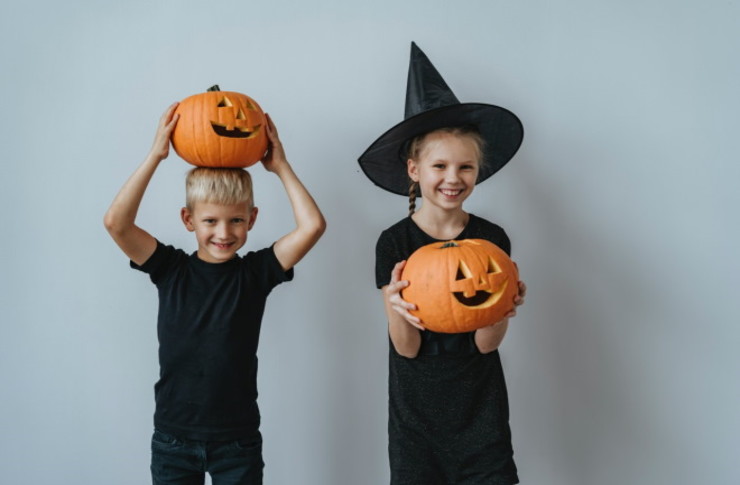Halloween: Traditions, Costumes, Decorations, Pumpkins, and Ghosts
Every year, Halloween brings a mix of history, creativity, and community rituals that range from quiet reflection to lively street-level celebrations. Originating in seasonal and religious observances, the modern holiday blends folklore with contemporary expressions: costumes, carved pumpkins, home decoration, and playful or eerie ghost imagery. This article explains practical and cultural aspects to help you enjoy Halloween thoughtfully and safely.

halloween: origins and modern meaning
Halloween traces roots to ancient harvest festivals and All Hallows’ Eve, a time that historically marked seasonal transitions and remembered the dead. Over centuries those observances absorbed Celtic, Christian, and later popular customs, creating a holiday associated with liminal moments—the threshold between seasons and states of being. Today, Halloween serves as both a community event and a form of personal expression, where folklore, commercial elements, and neighborhood traditions intersect.
Understanding these origins helps explain recurring motifs—masks and costumes as protections against spirits, carved lights to guide or ward, and gatherings that mix food, storytelling, and performance. For many people, Halloween is a family-friendly occasion centered on candy and parties; for others, it remains a time for exploring folklore, theater, and seasonal rituals.
costume choices and DIY ideas
Costumes are a central way people participate in Halloween, offering opportunities for creativity across all ages. Popular contemporary choices range from classic characters to current cultural figures, but homemade and upcycled costumes remain accessible and environmentally friendlier. Simple DIY ideas include repurposing clothing, using face paint (safely tested for skin), or designing paper accessories. When planning a costume, consider visibility at night, comfort for long wear, and whether any props could be hazardous in crowded settings.
For families, coordinating themes between children and adults or creating receptive sensory-friendly options can make the night more inclusive. If purchasing costumes, check sizing and safety labels; if renting or assembling costumes from local services, allow time for fittings and returns. Prioritizing mobility and weather-appropriate layering ensures costumes are practical as well as expressive.
decoration tips for indoor and outdoor
Decorations set the tone for Halloween and can be tailored from subtle to elaborate. For outdoor displays, consider durable lighting, secure fastenings to withstand wind, and clear walkways for visitors. Indoor decorations can use fabric, paper, and battery-operated lights to reduce fire risk. Layer textures—like gauze, matte pumpkins, and faux vines—to build atmosphere without creating trip hazards. If you plan elaborate setups, check local ordinances about prohibited items and noise guidelines, especially for displays that attract crowds.
Sourcing decorations from secondhand stores or making them from recycled materials reduces environmental impact. For community events, coordinate themes with neighbors to create cohesive streetscapes and share resources like extension cords and signage. Use “local services” for professional installation or temporary lighting when displays exceed what household tools can safely manage.
pumpkin carving and alternative uses
Pumpkin carving is a widely recognized Halloween craft, often involving lanterns with simple or intricate designs. When carving, use proper tools designed for pumpkins, cut away from the body, and supervise children closely. Save seeds for roasting and flesh for cooking to reduce waste. If carving isn’t preferred, painting or etching pumpkins offers a less messy, longer-lasting alternative suitable for indoor displays where open flames aren’t allowed.
Beyond traditional jack-o’-lanterns, pumpkins can be turned into planters, natural centerpieces, or composted after use. Community pumpkin patches and farms often provide educational opportunities and seasonal produce; checking hours and rules helps plan visits. For those seeking a longer-lasting decorative option, faux pumpkins made from wood, fabric, or resin maintain the seasonal look without rapid spoilage.
ghost imagery: symbolism and safety
Ghosts appear in Halloween imagery as symbols of memory, boundary-crossing, and the unknown. In literature and folklore, ghost stories explore loss, unresolved conflicts, and cultural anxieties. On Halloween, ghost motifs take playful and eerie forms—from simple sheet figures to elaborate animatronics. When using ghost decorations, ensure any moving parts are secure and do not startle vulnerable visitors, especially small children or people with sensory sensitivities.
If staging haunted attractions or yard animatronics, clearly mark entrances and provide safe egress routes. Consider offering mild and intense experience options so guests can choose their preferred level of fright. Respect neighborhood standards for noise and late-night activity, and ensure props do not obstruct sidewalks or create safety risks for trick-or-treaters and passersby.
Conclusion
Halloween combines historical traditions with contemporary creativity, offering varied ways to celebrate through costumes, decorations, pumpkin projects, and storytelling about ghosts and the unseen. Thoughtful planning—considering safety, inclusivity, and sustainability—helps maintain community enjoyment while honoring both the holiday’s cultural roots and modern expressions. Whether you favor quiet seasonal reflection or lively neighborhood festivities, understanding practical and symbolic aspects can make Halloween a meaningful part of the autumn season.






